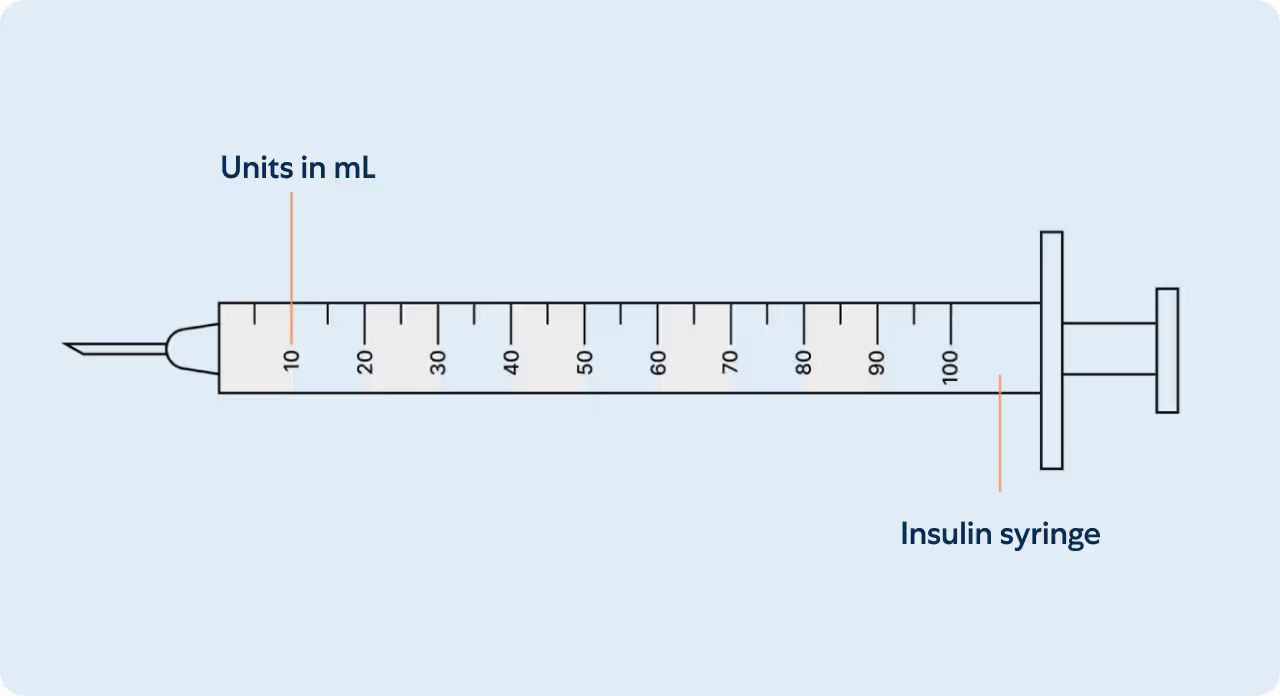Storage
Store at room temperature, away from heat and moisture. No refrigeration is needed.
Instructions
This information is intended for individuals who have been prescribed Metformin by their Alan Health provider.
Metformin is commonly prescribed to treat type 2 diabetes, but it is also used off-label to support weight loss in individuals with an elevated BMI—even if you are not diabetic.
How to Take Metformin
- Take exactly as prescribed by your provider.
- Take with food to minimize nausea or digestive upset.
- If you miss a dose, skip it and return to your normal schedule. Do not double up to make up for a missed dose.
Understanding your insulin syringe

Measuring your dose
Insulin syringes are used for subcutaneous injections. They are marked in Units on the insulin syringe barrel (see illustration). Insulin syringes facilitate the precise measurement of tiny amounts of liquids which are ideal for medications such as insulin that require small and accurate dosing. Unit marks are also expressed in mL’s and can be interchangeably referenced. A prescriber may write a prescription in Units or in mL’s.
Within the amount of liquid is the prescribed mg dosage of your medication (see mg chart). Milligrams (mg) is not an amount of liquid, but rather the amount of drug that is within. The conversion between units and milligrams varies depending on the concentration of the product being used.
What can I expect?
{{what-to-expect-metformin}}
Safety information
The most common side effects of metformin include nausea, diarrhea, and indigestion.
In rare cases, side effects may include vomiting or more significant abdominal discomfort. If these symptoms persist, stop taking the medication and contact your provider.
A full list of side effects can be found here.
Do not use this product if you are currently pregnant, breastfeeding, or plan to become pregnant or breastfeed without consulting a qualified healthcare provider.
Note: Metformin should not be used by individuals who have severe kidney disease, are significantly dehydrated, are preparing for surgery, or have recently received IV contrast for a CT or MRI scan. Use caution when taking metformin with NSAIDs, diuretics, certain blood pressure medications, alcohol, or IV contrast agents.
Note: The above statements have not been evaluated by the Food and Drug Administration. This product is not intended to diagnose, treat, cure, or prevent any disease.
Frequently Asked Questions
How do I take Metformin?
Metformin comes as an easy-to-take daily pill. We typically prescribe Metformin 500 mg, with the standard instruction to take two tablets by mouth once daily. Your provider may start you on a lower dose and gradually increase it to help avoid side effects.
What are the potential side effects?
Some people may feel mild nausea or stomach discomfort during the first week or two. Taking metformin with food can help ease these symptoms, which usually go away as your body adjusts.
How do I know if Metformin is right for me?
Alan Health connects you with licensed providers who assess your health, goals, and lifestyle to see if Metformin could be beneficial for you. If the provider determines that it is a good fit, your prescription will be delivered right to your door via our trusted pharmacy partners.
Can I Take Metformin with GLP-1s?
Yes, Metformin and GLP-1s often work well together. Your provider will guide dose timing and titration to help manage any overlapping GI side effects
Who should not take metformin?
Metformin may not be right for people with kidney or liver disease, those who drink heavily, or anyone undergoing imaging with IV contrast. Always share your full health history.
Additional support
For details about your medication and dosing, please log in to your patient portal. Your physician is here to help with any medical questions. If you are experiencing a medical emergency, call 911 right away.













